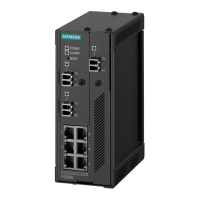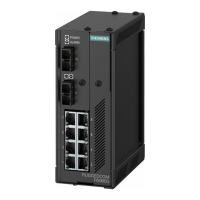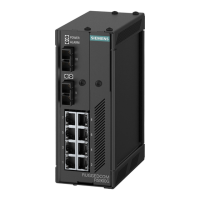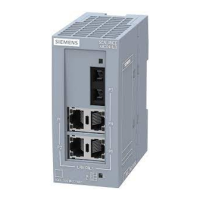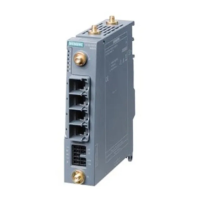Chapter 1
Introduction
RUGGEDCOM NETCONF
Reference Guide
8 Sample Session: Performing an Action
2. Respond to the device with the client's <hello> statement. The client's <hello> statement can describe the
client's capabilities, or it can respond with just the base NETCONF capability. This example shows the minimal
<hello> response:
<hello xmlns="urn:ietf:params:xml:ns:netconf:base:1.0">
<capabilities>
<capability>urn:ietf:params:netconf:base:1.0</capability>
</capabilities>
</hello>]]>]]>
3. Issue an <rpc> request with the action to perform:
<rpc message-id="1005" xmlns="urn:ietf:params:xml:ns:netconf:base:1.0">
<action xmlns="http://tail-f.com/ns/netconf/actions/1.0">
<data>
<admin xmlns="http://ruggedcom.com/ns/rmf_admin">
<set-system-clock>
<time>2012-03-26 18:00:00</time>
</set-system-clock>
</admin>
</data>
</action>
</rpc>]]>]]>
• All commands must be enclosed within <rpc> tags. The message-id attribute is not required but is
recommended. The message-id attribute is returned in the device response, allowing you to match
responses with requests.
• The <action> element indicates that this request is to perform an action on the device. The <action>
element must refer to the action namespace in the xmlns attribute.
• The <admin> element is the root of the RUGGEDCOM admin namespace. Within the <admin> element,
additional elements navigate down to the desired command. In this example, we are navigating to admin/
set-system-clock in the RUGGEDCOM NETCONF data model.
• The ]]>]]> string indicates the end of the NETCONF message. Each NETCONF message must end with
]]>]]>
The device responds with the results of the command:
<?xml version="1.0" encoding="UTF-8"?>
<rpc-reply xmlns="urn:ietf:params:xml:ns:netconf:base:1.0" message-id="1005">
<data>
<admin xmlns='http://ruggedcom.com/ns/rmf_admin'>
<set-system-clock>
<system-clock>Mon Mar 26 18:00:01 2012</system-clock>
</set-system-clock>
</admin>
</data>
</rpc-reply>]]>]]>
• The <rpc-reply> element contains the response. Notice the message-id attribute returned with the
<rpc-reply> element; it corresponds to the <message-id> sent in the <rpc> request.
4. After receiving the response, close the session:
<rpc message-id="1006" xmlns="urn:ietf:params:xml:ns:netconf:base:1.0">
<close-session/>
</rpc>]]>]]>
The device responds with the following and closes the session:
<?xml version="1.0" encoding="UTF-8"?>
<rpc-reply xmlns="urn:ietf:params:xml:ns:netconf:base:1.0" message-id="1006">
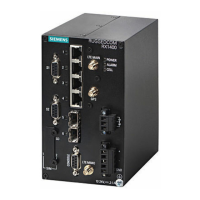
